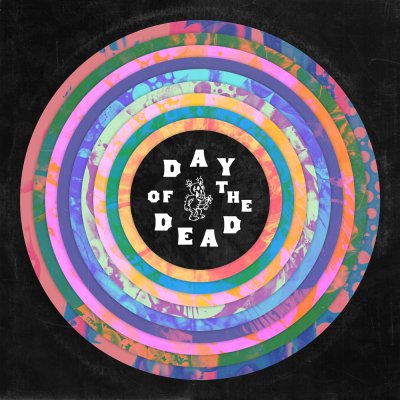At five and a half hours – the length of a marathon late-’60s Dead show at the Fillmore – actually putting out Day Of The Dead presented a dilemma. After considering non-traditional release methods such as an App or mini-albums, the Dessners broke the collection into three volumes, “Thunder”, “Lightning” and “Sunshine”. Taken all together, the sequencing roughly follows the contours of a typical Dead show, with folkier material up front giving way to spacier excursions. The material will also get a one-off live celebration, at this summer’s Eaux Claires Festival in Wisconsin, where many of the participants will already be gathered for their own sets, from younger acts such as Lucius and Unknown Mortal Orchestra to one semi-official member of the Dead, Bruce Hornsby. He is the lone carryover from the last major tribute to the Dead, 1991’s Deadicated, which featured mostly mainstream rock peers of the band such as Elvis Costello and Los Lobos remaking their most radio-friendly material. On Day Of The Dead, Hornsby bridges the generational gap on a hazy sunset version of “Black Muddy River” performed with Justin Vernon’s reunited first band, DeYarmond Edison.
For Hornsby, who played over 100 shows with the Dead in the late ’80s/early ’90s, indie rock is just the latest frontier for the Dead’s influence, which he has already watched seep into Americana and jazz scenes. “Clearly the Dead music, the reach of it is broadening, it’s widening, more young artists are discovering it,” Hornsby says. “And really, it’s easy to see why… they have fully 50 great songs to me, and another 100-150 very good ones. I’m not surprised it’s catching on.
“The Dead were totally intellectually curious on a musical level, that’s what interesting to me,” Hornsby continued. “They are so broad and so deep and their influences ranged far afield from Reverend Gary Davis, to Milton Babbitt and electronic classical music. People just have no idea of the scope of it unless they really check it out.”
Certain performances suggest the Dead had already crept into the DNA of indie rock without anyone noticing. Kurt Vile And The Violators’ extra-faithful “Box Of Rain” and The War On Drugs’ ’80s-period-appropriate take on “Touch Of Grey” both could fit right into the bands’ recent albums with ease. Stephen Malkmus & The Jicks’ giddy, sloppy “China Cat Sunflower”/“I Know You Rider” equally evokes the Dead’s brash early period and the ramshackle sound of indie legends Pavement – two bands that rarely share the same sentence. “Over the years, the Dead were often put down by punk rockers, indie rockers and later generations for being slack and for the long noodly jams at the shows,” says Lee Ranaldo. “But the thing that is often overlooked is what amazing songs they wrote – and how many. Hearing all these ‘youngsters’ covering their music brought home how amazing their songbook was.”
Whether Day Of The Dead will further crack open that window on the band remains to be seen. But in the aftermath of the Dead’s 50th anniversary celebrations, with yet another semi-reunion on the road (Dead & Company, with John Mayer in the Jerry role), and a cultural footprint that continues to resist erosion, the compilation comes at a propitious time to help establish the next chapter of the Grateful Dead’s legacy and following. “I think this could be a bridge in a way, to hear this stuff interpreted by artists and people that have spent a lot of time with the Dead’s music and hear it done with such love and care,” Dessner says. “All this is about the future of this music.”
Uncut: the spiritual home of great rock music.



